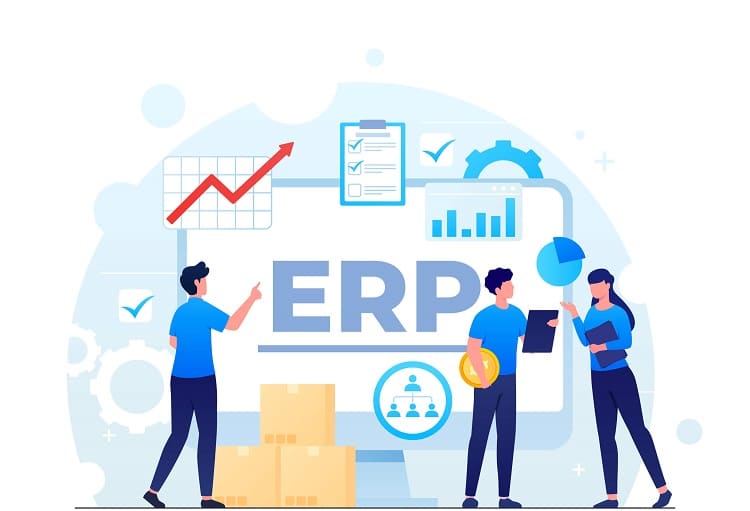The old playbook for making business contacts used to be straightforward. You booked a flight, picked up your badge at registration, shook hands until your knuckles hurt, and flew home with a stack of business cards.
In 2025, things are different. Teams work across continents, travel budgets face more scrutiny, and audiences expect both immersive in-person moments and high-quality online access.
Hybrid events, those that mix live attendance with a digital component, are no longer a temporary pandemic workaround.
They’re becoming the standard format for serious companies that want to build relationships, fill their pipeline, and create communities that last beyond a single conference.
Today, we prepared a detailed look at why hybrid is taking over, what the numbers say, and how to design events that deliver networking value you can actually measure.
Table of Contents
ToggleKey Points
- Hybrid events combine in-person and virtual formats to maximize reach, flexibility, and networking impact.
- Success depends on clear audience goals, intentional program design, and strong accessibility measures.
- Budget for tech, production, and engagement tools – hybrid isn’t automatically cheaper.
- Tracking ROI and engagement data is key to proving value and refining future events.
What Hybrid Means in Today’s Market
- In-person only: Everyone attends onsite. No digital access in real time.
- Virtual only: Everyone participates remotely through a platform.
- Hybrid: Both onsite and remote participants share programming and interaction opportunities.
Some companies run simple hybrid formats for improving their business skills, internal meetings and more elaborate setups for flagship launches or customer conferences.
The key is not the label, but the intent: giving every audience a meaningful way to connect, learn, and follow up.
Quick Comparison Table
| Format | Core strengths | Tradeoffs | Best use cases | Typical success signals |
| In-person only | Deep trust, immersive demos, spontaneous chats | Higher cost, travel friction, limited reach | High-stakes deal forums, lab tours | Meetings booked onsite, faster post-event deals |
| Virtual only | Scale, lower cost, easy content access | Less spontaneity, screen fatigue | Thought leadership, training, time-zone reach | Registrations, on-demand completion, MQLs |
| Hybrid | Reach plus depth, data capture, flexibility | More complex operations, higher tech costs | Product launches, partner summits, communities | Engagement across audiences, pipeline influence |
Why Hybrid Is Growing Fast
Distributed Work Is the Norm
Microsoft’s Work Trend Index points to 2025 as a pivotal year for flexible, AI-assisted, distributed work.
Teams need formats that allow meaningful participation from anywhere, which makes hybrid a natural fit.
Budgets are Tight But Travel is Steady
The 2025 CWT–GBTA Global Business Travel Forecast projects the cost per attendee per meeting day at 169 dollars.
While in-person demand is healthy, many events now include virtual delegates as a hedge against travel restrictions, policy changes, or sudden cost increases.
Buyers Want Options
McKinsey research shows that at any point in the buying cycle, about one-third of decision-makers prefer in-person contact, one-third want remote human interaction, and one-third choose digital self-service.
An event strategy that ignores this split is leaving opportunities on the table.
Networking Drives Repeat Attendance
Freeman’s 2025 trends report confirms that attendees are most likely to return if they achieve valuable networking outcomes. If that’s the top reason people show up, it should be the top design priority.
Sustainability and Access are Priorities
Nature Communications research suggests moving events fully online can cut emissions by 94 percent, while regional-hub hybrid formats can achieve two-thirds reductions without sacrificing face-to-face value.
Exhibitions are Back, But Digital is Embedded
UFI data shows exhibitions returning to pre-pandemic strength, with organizers integrating digital tools for year-round engagement. That’s essentially hybrid thinking applied to the trade show floor.

What the Data Shows About Hybrid in 2025
- Format mix: According to American Express Global Business Travel, in-person remains the top choice, but hybrid and virtual together represent about 41 percent of events.
- Spending trends: 66 percent of respondents expect higher meeting budgets in 2025, though with more scrutiny on accessibility and inclusion.
- Cost reality: CWT–GBTA warns that hybrid formats require dedicated budget for production, streaming, and platform integration – virtual isn’t “free.”
- Planning flexibility: MPI’s Meetings Outlook shows planners adjusting expectations each quarter as costs, tariffs, and policy conditions shift. Hybrid provides a safety valve.
Why Hybrid Works for Networking

1. More Entry Points for First Contact
Hybrid formats let you capture prospects who can’t travel but still want to engage – through live chat, topic rooms, or moderated small-group sessions.
Those early connections can lead to in-person meetings at future events.
2. Better Matchmaking from the Start
Modern registration tools capture attendee goals and preferences, which you can feed into matchmaking systems.
That enables targeted introductions, small peer circles, or reverse pitch sessions that align with each participant’s objectives.
3. Time-Zone Flexibility
Hybrid allows someone to join a keynote live, attend a workshop later in their own time zone, and request introductions asynchronously – all without missing core content.
4. Built-In Inclusion
Remote access benefits caregivers, professionals with disabilities, and international attendees who can’t travel easily.
Features like captions, audio descriptions, and compliance with WCAG 2.2 should be considered standard.
Designing Hybrid Networking That Works

1. Start With Audience Outcomes
Define three or four networking results your participants want, such as:
- Meet five peers facing similar challenges
- Gain two qualified partner leads
- Secure a customer reference
- Have a 20-minute consult with an expert
2. Build a Simple, Intentional Program
- Anchor moments: Keynotes and high-value sessions both audiences share.
- Connection blocks: Short, scheduled windows for facilitated networking.
- Depth tracks: Onsite roundtables mirrored by remote cohorts with shared moderation.
- Office hours: Bookable one-on-one meetings with product or partner teams.
3. Encourage Serendipity
- Request a short “hello video” during registration.
- Auto-suggest connections based on shared tags.
- Have staffed “connect desks” onsite and online to prompt introductions, or even add a Glambot camera for a red-carpet style moment that gets attendees excited to share clips on social media.
4. Make Both Audiences Feel Present
- Use front-row displays for remote participants so speakers can see them.
- Assign a dedicated remote host to manage chat, questions, and links.
- Maintain a single backchannel chat for all attendees.
5. Bake in Accessibility from the Start
- Provide live captions and transcripts.
- Use high-contrast slides and readable fonts.
- Publish an accessibility statement listing your compliance measures.
Your Hybrid Tech Stack in Plain Language
| Layer | What you need | Notes |
| Registration & data | SSO, consent capture, custom goal fields | Treat as the CRM entry point |
| Streaming & interactivity | Low-latency streaming, moderated Q&A, polls, breakout rooms | Use familiar tools to reduce training time |
| Mobile & web app | Agenda, maps, chat, matchmaking, booking | One integrated environment for both audiences |
| CRM & marketing automation | Clean contact data, UTM tracking, triggered follow-ups | Map event interactions to the customer lifecycle |
| Analytics | Engagement metrics, meeting outcomes, attribution | Segment reports by audience type and account tier |
Budgeting and Proving ROI
Cost expectations: Include production, streaming, and integration costs alongside venue and travel. Hybrid isn’t cheaper by default.
ROI Model
- Define hard goals (meetings booked, opportunities created, retention touchpoints).
- Track four levers:
- Cost per engaged attendee
- Meetings per 100 attendees
- Pipeline per meeting
- Win rate and cycle time for influenced deals
- Compare onsite and remote audience economics to refine future mix.
Sample Hybrid Budget Allocation
| Category | % of total |
| Venue, F&B, onsite staff | 38 |
| Production & A/V | 18 |
| Platform & integrations | 10 |
| Content creation & editing | 12 |
| Marketing & media | 12 |
| Accessibility services | 4 |
| Contingency | 6 |
Sustainability and Policy Factors
- Regional hubs near train networks
- Menus emphasizing lower-carbon options
- Published travel guidance to favor sustainable routes
- Accessibility compliance to WCAG 2.2 to support equitable participation and reduce legal risk
Risk Management and Resilience

Even with travel stabilizing, geopolitical and economic shifts can affect attendance. A hybrid model protects your investment by keeping a digital participation option live if onsite turnout dips.
Case Snapshot – Microsoft Build 2025
Microsoft combined live, in-person programming with streaming and on-demand access.
Remote developers could follow sessions in real time, while onsite participants got hands-on time with engineers. This is a hybrid used for both scale and depth.
Common Pitfalls to Avoid
- Treating remote as an afterthought – they need dedicated hosting and engagement tools.
- Overstuffing the schedule – fewer, higher-impact sessions work better.
- Skipping attribution – without tracking how networking leads to revenue, future budgets are at risk.
- Neglecting accessibility – it’s a baseline requirement, not an upgrade.
90-Day Hybrid Event Playbook

Days 1–15
- Define networking and commercial goals
- Choose program architecture
- Confirm tech integrations
- Draft accessibility statement
Days 16–45
- Open registration with preference capture
- Recruit facilitators and remote hosts
- Script networking sessions
- Validate budget
Days 46–75
- Run full rehearsal with both audiences
- Test chat moderation and captions
- Target invites to priority accounts
Days 76–90
- Launch with unified chat and visible remote presence
- Capture meeting outcomes in CRM
- Publish on-demand content quickly
- Report on networking and pipeline impact
Final Takeaway
Hybrid events match the way people work and buy in 2025. They expand reach, keep you resilient in uncertain conditions, and give you richer data while preserving the human connections that make business networking valuable.
Plan with clear outcomes, budget for the technology and talent needed, and connect your event to the rest of your customer journey.
When done well, a hybrid isn’t a backup plan, but the main stage for building relationships that matter.


